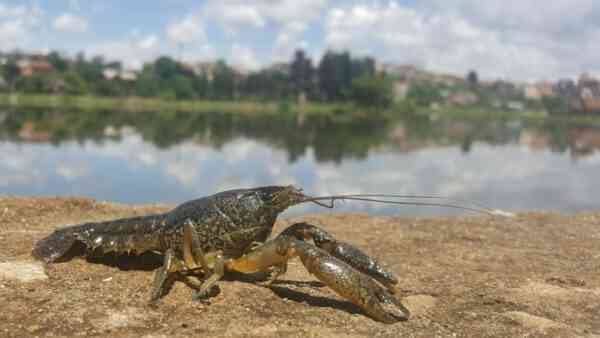Crustaceans include not only crayfish familiar to us, which some of us caught in childhood, but also many other aquatic life. They live in both fresh water and salt water, and are generally found on all continents and many islands. Crayfish have always been an object of fishing, but not too massive, since, for example, it is much easier to catch fish, but residents of coastal areas often catch them quite actively, and sometimes they grow them on purpose. And from the point of view of biology, crustaceans are very interesting for their abilities and ability to adapt to the most difficult environment.
Interesting facts about crayfish
- Most species of crayfish are very demanding on the purity of water. They cannot live in dirty water.
- The color of the cancer varies depending on the habitat and the properties of the water: from greenish-brown to blue-brown.
- The meat of crayfish is white, it has a pleasant and delicate taste. It is mainly contained in the neck (tail) of the crayfish and occupies approximately 20% of its total weight.
- The Murray River in the USA, Victoria, is famous for the largest crayfish in the world.
- In Finland crayfish festivities are regularly held, and in Sweden every second Wednesday of August, an elegant picnic is held in honor of treating crayfish.
- If cancer, due to some circumstances, loses its claw, then over time it will grow a new one. For this reason, crayfish with claws of different sizes come across.
- During molting, crayfish become helpless. Moulting occurs several times during the first two years of life, and several more times during the rest of the period of existence.
- The life expectancy of crustaceans can reach 20 years.
- Ancient physicians believed that if the bite of a mad dog, a poisonous snake or a scorpion is thickly sprinkled with the ashes of a burnt cancer, then the poison will be rendered harmless. Of course, this is not so.
- Cancer breathes through skin gills, but in order for oxygen exchange to be maintained at the proper level, it should crawl out into fresh air from time to time (interesting facts about oxygen).
- Crayfish are almost never found in lakes and ponds, more often they can be found in clean rivers, where water does not stagnate and there is not much silt.
- A large crayfish can weigh up to two hundred grams, but catching one is a rare success.
- Crayfish feeds mainly on plant foods, various aquatic plants make up to 80 percent of the total diet, but on occasion it does not disdain carrion.
- Crayfish are notorious cannibals. During the molting process and immediately after it, there are often cases of attacks on their relatives among them.
- The eyes of the crayfish are located on the stalks, which makes it possible to put them forward. This feature helps the ability to regulate vision.
- The female is able to lay up to 600 eggs, and the process of carrying them takes six months.
- A crayfish that has lost its tail always dies. This is due to the fact that the tail is the main tool for movement in the water, it is with its help that the ascent to the surface occurs to obtain oxygen.
- In crustacean lobsters, this the same 9-month pregnancy cycle as in humans.
- The largest representative of crustaceans is the giant sea spider, from the name you can judge its majestic size and appearance. This is the largest crab in the world, it has claws that grow 4 meters in length (interesting facts about crabs).
- The smallest crustaceans, like the largest, live in the water. They are called water fleas or daphnia. This crustacean plankton has microscopic dimensions that range from 2 to 6 mm.
- Crustaceans serve as natural water purifiers, they feed on carrion: dead fish or animal remains. Thanks to them, the bottom of the reservoir becomes cleaner, which is useful for other inhabitants.
- Crabs, which also belong to crustaceans, are very aggressive towards their own brethren, males fight for the right to possess a female, while puberty in this species occurs at 7-9 years old. But they are not much friendlier with females either, after fertilization, the crab can eat the female along with future offspring if she does not flee in time.
- 500 species of crustaceans live off the Black Sea coast (interesting facts about the Black Sea).
- Crayfish, which naturally have a greenish, grayish or bluish color of the shell, turn red when they enter boiling water. This is explained by the fact that the shell contains pigments of different colors, but only red can withstand high temperatures, and the rest of the pigments simply decay.
- The hermit crab does not have its own shell, so it climbs into free shells and lives in them, up to until the shell becomes too small for him. Then he will look for a new one.
- Lobsters lack the aging gene, these crustaceans can theoretically live forever. But people think they are too tasty.
- The stomach of crabs is located in the head, it is equipped with teeth, which during the molting period change along with the stomach and part of the head.
- Woodlice also belong to the family of crustaceans, which many consider insects (interesting facts about insects).
- Among all multicellular organisms, crustaceans have the largest number of genes – up to 30 thousand.
